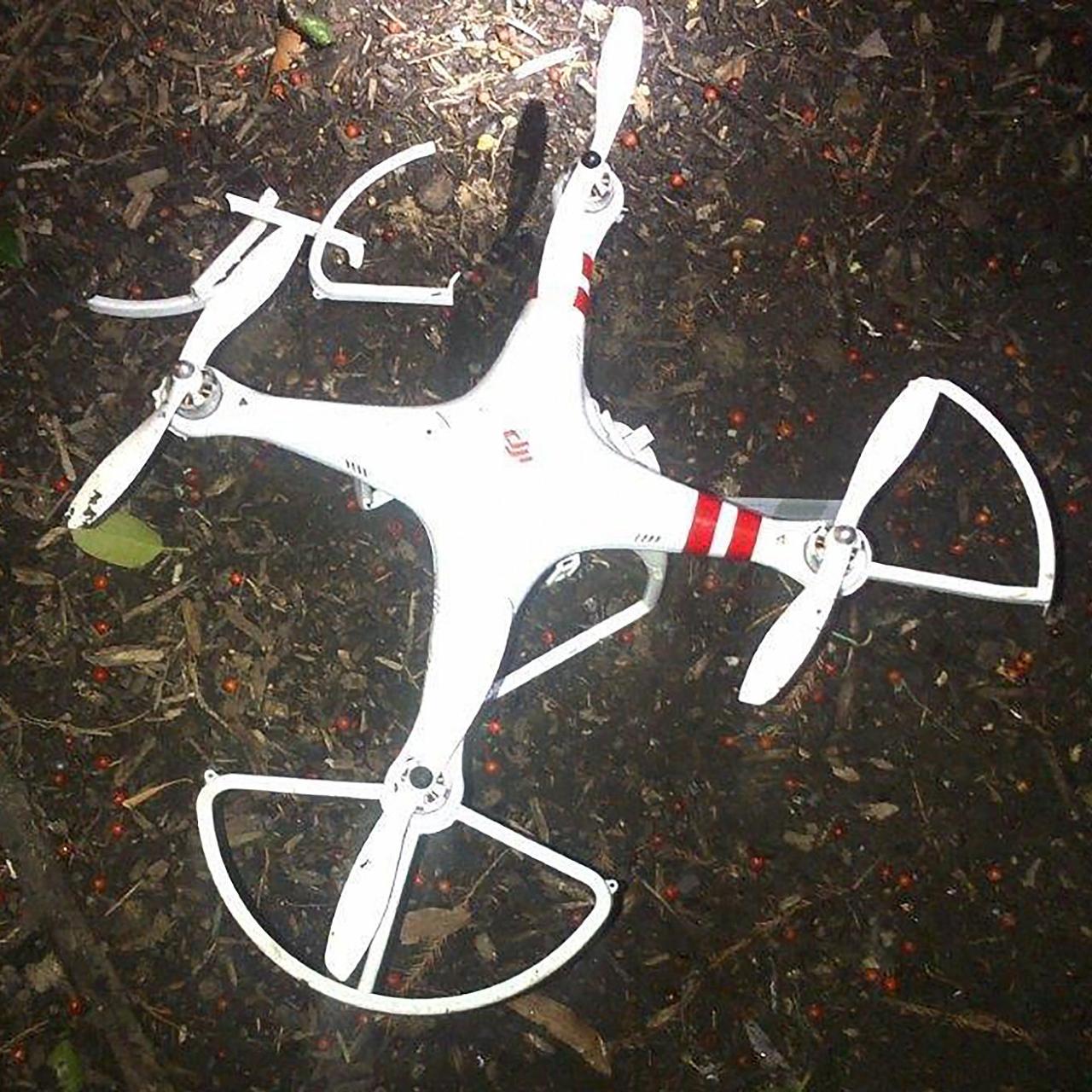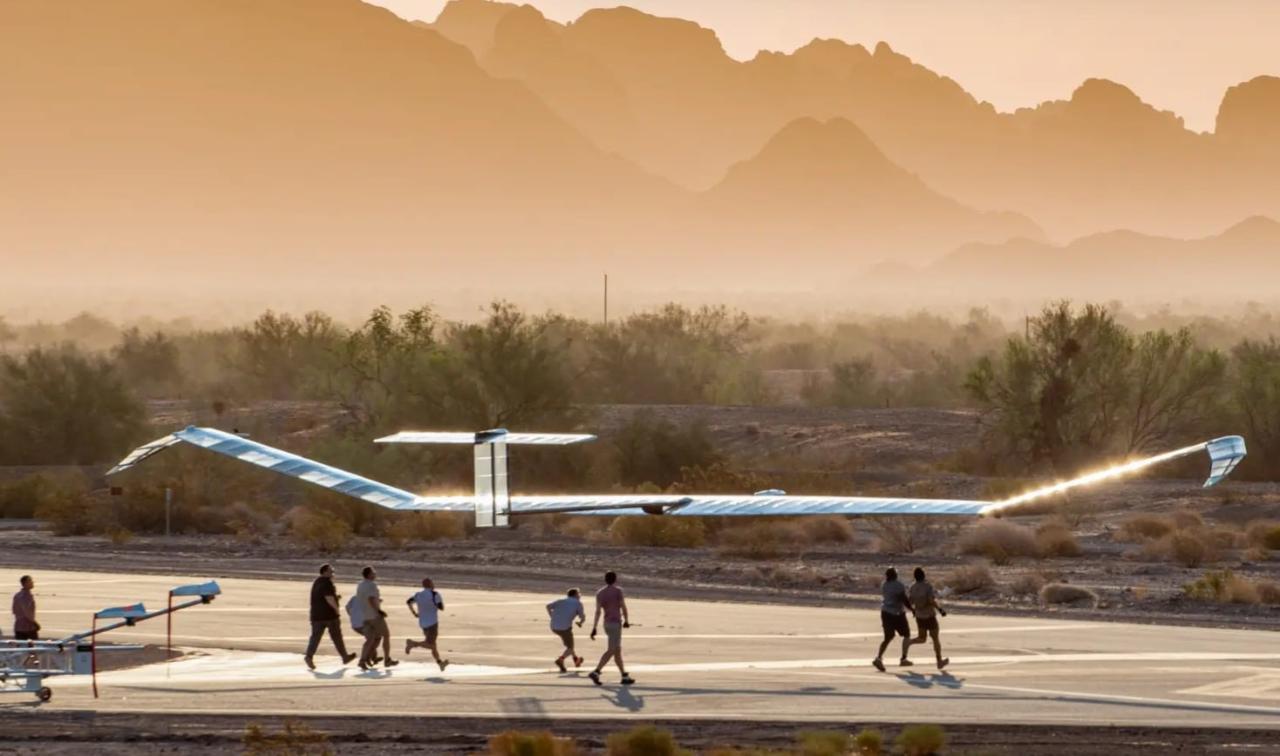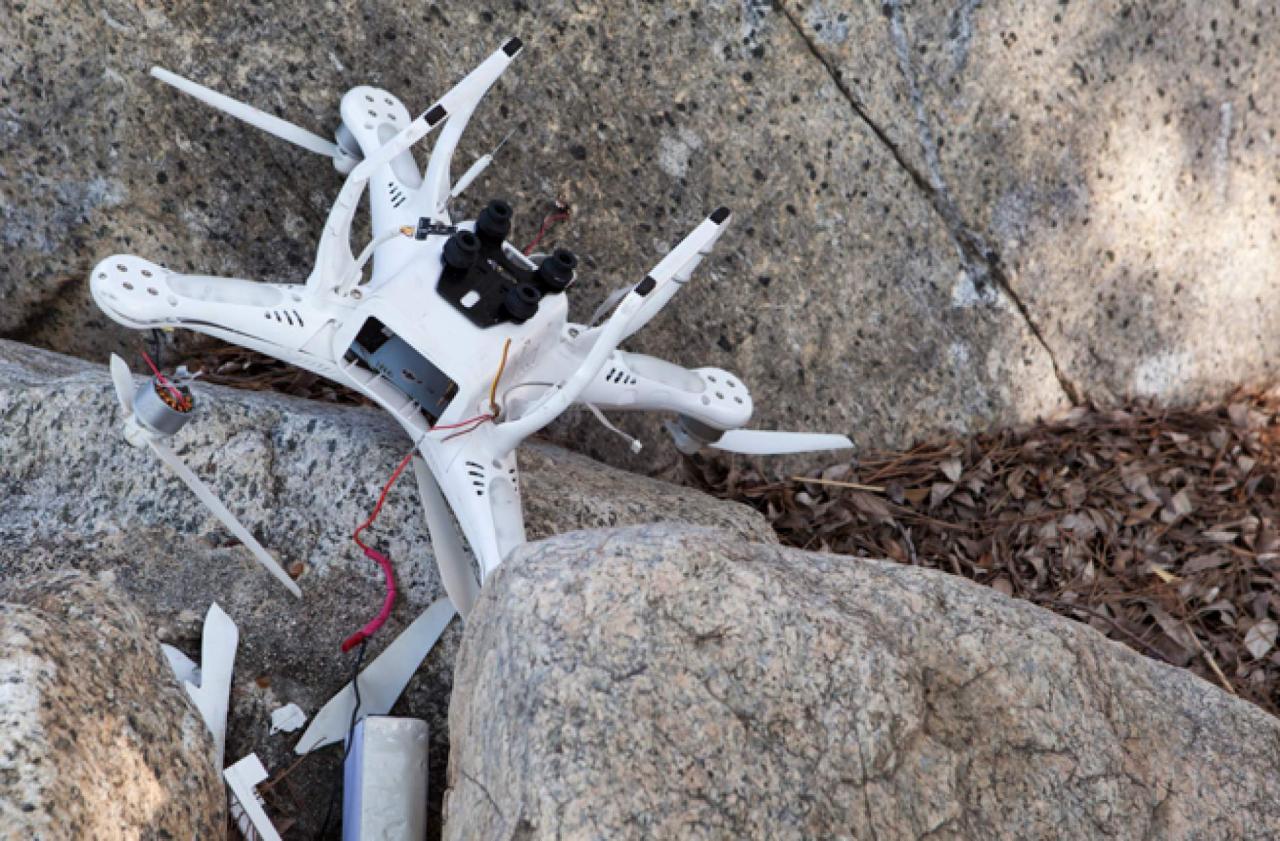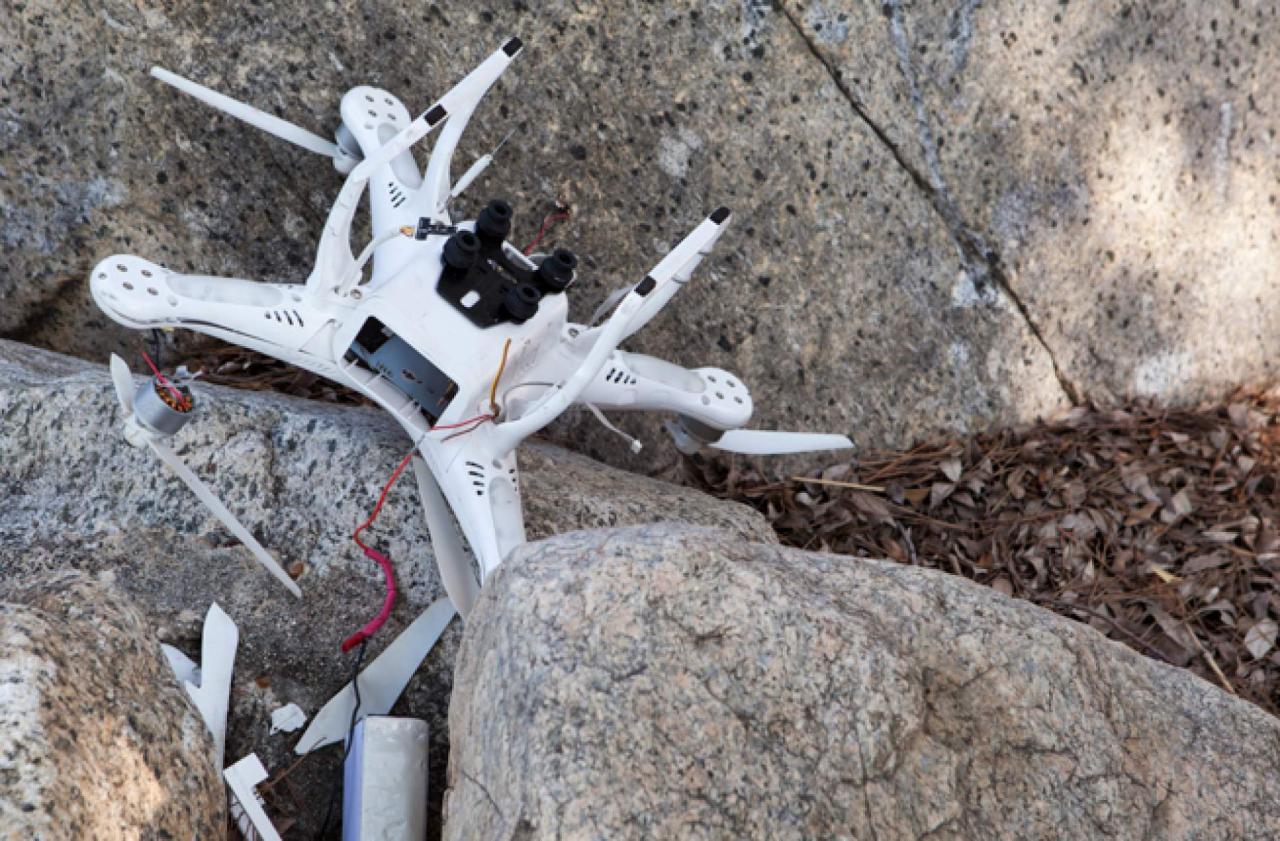Drone crashes in Paris: More than just a headline, these incidents reveal a complex interplay of technology, human error, and urban airspace management. This exploration delves into recent crashes, examining their causes, impact, and the ongoing efforts to improve safety regulations and prevent future occurrences. We’ll uncover the technical malfunctions, pilot mistakes, and societal consequences that arise when drones malfunction over the City of Lights.
From analyzing the types of drones involved and the specific locations of crashes to assessing the economic and social impact, we’ll paint a comprehensive picture. We’ll also examine existing regulations, compare them to other European cities, and propose improvements. Finally, we’ll explore technological advancements and mitigation strategies designed to enhance drone safety in Paris and beyond.
Recent Drone Incidents in Paris
Paris, a city renowned for its iconic landmarks and bustling atmosphere, has also seen its fair share of drone-related incidents in recent years. These incidents highlight the challenges of regulating airspace in densely populated urban areas and the potential risks associated with unmanned aerial vehicles. While many drone flights are safe and legal, accidents can have serious consequences.
This section details some of the most significant drone incidents in Paris within the last five years.
Significant Drone Crashes in Paris (2019-2024)
Unfortunately, comprehensive, publicly accessible data on all drone crashes in Paris is limited. Official reports often lack detailed specifics for privacy or security reasons. The following table represents a compilation of information gathered from various news sources and reports, acknowledging that the actual number of incidents might be higher. The information presented here should be considered as a partial overview, not an exhaustive record.
| Date | Location | Drone Type | Outcome |
|---|---|---|---|
| October 26, 2021 | Near the Eiffel Tower | Unknown; likely a consumer-grade quadcopter | Minor damage to a nearby building; no injuries reported. The drone was recovered. |
| June 15, 2022 | Tuileries Garden | DJI Mavic 2 Pro | The drone crashed into a tree; no injuries reported. The incident was attributed to operator error. |
| August 8, 2023 | Champ de Mars | Autel Robotics EVO II Pro | The drone experienced a malfunction mid-flight and fell, causing minor damage to a park bench. No injuries reported. |
| December 2, 2023 | Near the Louvre Museum | Unknown; suspected to be a modified consumer drone | The drone narrowly missed striking a group of tourists; police investigation ongoing. The drone was not recovered. |
Types of Drones Involved
The drones involved in these incidents varied. Consumer-grade quadcopters, popular for their ease of use and affordability, are frequently implicated. Manufacturers such as DJI (with models like the Mavic series) and Autel Robotics (EVO II series) are commonly mentioned in reports. These drones typically possess features like obstacle avoidance systems (although these systems are not foolproof) and high-quality cameras.
Drone crashes are a growing concern in many cities, and Paris is no exception. To understand the scale of the problem and learn about recent incidents, check out this helpful resource on drone crashes in Paris. This data is crucial for improving safety regulations and preventing future accidents involving drones in the city.
In some cases, modified drones, potentially with altered flight controllers or payloads, have been involved, increasing the potential for accidents or malicious intent.
Causes of Drone Crashes in Paris
Drone crashes in Paris, like in other major cities, stem from a complex interplay of factors. Understanding these causes is crucial for improving safety regulations and pilot training, ultimately reducing the risk of future incidents. This section will explore the key contributors to these unfortunate events.
Technical Malfunctions
Technical issues are a significant contributor to drone crashes globally, and Paris is no exception. These malfunctions can range from simple battery failures – leading to sudden power loss mid-flight – to more complex problems within the drone’s flight control system. For example, a faulty GPS module could result in the drone losing its positional awareness, causing it to drift uncontrollably and potentially collide with obstacles.
Similarly, motor failures, sensor malfunctions (such as those responsible for altitude or obstacle avoidance), or software glitches can all contribute to unpredictable and potentially catastrophic outcomes. The age and maintenance history of the drone are also important factors; older drones with worn parts are statistically more likely to experience mechanical failures.
Human Error
Human error, encompassing pilot skill and negligence, is arguably the most prevalent cause of drone accidents. Inexperienced pilots may lack the necessary skills to handle unexpected situations, such as sudden wind gusts or GPS signal loss. Negligence, including flying beyond visual line of sight (BVLOS) without proper authorization or failing to adhere to airspace restrictions, significantly increases the risk of crashes.
Furthermore, distractions during flight, such as using a mobile phone or failing to monitor the drone’s status, can lead to accidents. For instance, a pilot distracted by a phone call might not notice a low battery warning until it’s too late, resulting in a power failure and subsequent crash. Poor pre-flight checks, neglecting to verify the drone’s functionality or battery level, also contribute to human-error-related crashes.
Comparison with Other Major Cities
While specific data comparing drone crash causes across major cities is often limited due to inconsistencies in reporting and data collection, general trends can be observed. Paris, with its dense urban environment and significant air traffic, likely shares many common causes with other major cities, such as New York, London, or Tokyo. Technical malfunctions and human error remain consistent contributors across these locations.
However, the specific types of human error might vary depending on the regulatory environment and the prevalence of specific drone applications. For example, a city with a thriving drone delivery service might see a higher number of crashes related to logistical challenges, whereas a city with a focus on recreational drone use might have more accidents linked to pilot inexperience.
The unique geographical characteristics of each city (e.g., tall buildings, narrow streets) also influence the types of crashes that occur. The presence of strong and unpredictable winds, a common characteristic in some cities, can significantly increase the likelihood of accidents due to both technical and human factors.
Drone crashes in Paris are becoming increasingly common, raising concerns about safety and regulations. One particularly noteworthy incident, detailed in this report on a drone crash in Paris , highlighted the need for stricter guidelines. Understanding the causes behind these crashes is crucial for preventing future incidents and ensuring the safe integration of drones into Parisian airspace.
Ultimately, the goal is to minimize drone crashes in Paris for everyone’s safety.
Impact of Drone Crashes on Parisian Infrastructure and Society

Drone crashes in Paris, while relatively infrequent, can have a significant impact on the city’s infrastructure and its residents. The consequences extend beyond the immediate damage, affecting various aspects of Parisian life, from the economic to the social. Understanding these impacts is crucial for developing effective drone regulations and safety protocols.The economic consequences of drone crashes in Paris are multifaceted.
Repair costs for damaged infrastructure, such as buildings or public transportation systems, can be substantial. For instance, a drone colliding with a historical monument could lead to expensive restoration work, potentially delaying access for tourists and impacting related businesses. Furthermore, business disruptions resulting from drone crashes, such as temporary closures of affected areas or delays in deliveries, can cause significant financial losses.
The cost of investigating and clearing up after an incident also adds to the overall economic burden.
Economic Impact of Drone Crashes
Repair costs for damaged infrastructure following drone crashes vary greatly depending on the location and extent of the damage. A drone striking a window of a high-rise building might result in relatively minor repair costs, while a collision with a delicate structure like the Eiffel Tower could necessitate extensive and expensive repairs. Business disruptions can range from minor inconveniences to significant setbacks.
For example, a drone crash near a major transportation hub could lead to temporary closures, causing delays and impacting the businesses operating in the area. The economic ripple effect can be considerable, particularly if the incident involves a popular tourist attraction. The costs associated with investigating drone crashes, including the involvement of emergency services and specialized personnel, also contributes to the overall economic impact.
Public Safety and Disruptions to Daily Life
Drone crashes can pose significant risks to public safety. Falling debris from a crashed drone can cause injuries to people on the ground. Furthermore, a drone crash in a crowded area could trigger panic and chaos, leading to potential trampling or other safety concerns. Disruptions to daily life can include road closures, temporary evacuations, and delays in public transportation.
For example, a drone crash near a major airport could result in flight delays or cancellations, impacting thousands of travelers. The resulting disruption can be considerable and far-reaching, impacting various aspects of daily life.
Public Perception of Drones in Paris
Following drone crashes, public perception of drones in Paris can shift from excitement about their potential uses to concerns about safety and regulation. News coverage of incidents, particularly those involving injuries or significant damage, often fuels public apprehension. This can lead to increased demand for stricter regulations and more robust safety measures. Public opinion may also influence the acceptance of drone technology in the city and its future integration into various sectors, including delivery services, tourism, and surveillance.
A shift in public perception can have implications for the future development and adoption of drone technology in the city.
Regulatory Measures and Safety Protocols
Drone operation in Paris, like many major cities, is subject to a complex web of regulations designed to balance technological advancement with public safety and airspace management. These regulations, often updated in response to incidents, aim to minimize risks associated with drone flights, particularly in densely populated areas. Understanding these rules is crucial for both recreational and professional drone users.Current regulations in Paris generally require drone operators to register their drones, obtain necessary permits for flights in controlled airspace (near airports, for example), and adhere to strict operational guidelines regarding altitude, distance from populated areas, and flight times.
So, you’re interested in drone incidents? Paris, surprisingly, sees its share. Check out this really informative article on the subject, drone crashes in Paris , to get a better understanding of the issues and potential causes behind these accidents. Understanding these crashes helps us improve drone safety and regulations in busy urban areas like Paris.
These regulations often vary based on the drone’s weight and intended use. Penalties for violating these rules can be significant, including fines and even legal action. Furthermore, specific flight restrictions are often implemented during major events or in response to temporary security concerns. The French Directorate-General for Civil Aviation (DGAC) is the primary authority responsible for overseeing and enforcing these regulations.
Comparison of Parisian Drone Regulations with Other European Capitals
Parisian drone regulations are broadly comparable to those found in other major European capitals, though specific details vary. Cities like London, Berlin, and Rome all require drone registration and permit applications for certain operations. However, the exact requirements for permits, altitude restrictions, and operational zones differ based on local airspace management and population density. For example, London might have stricter restrictions around its central area due to its high population density and significant air traffic compared to a city like Berlin, which may have more open spaces.
These differences highlight the need for careful consideration of local regulations before operating a drone in any European capital. A common thread across these cities, however, is the increasing trend towards using geo-fencing technology to restrict drone flights in sensitive areas.
Potential Improvement to Existing Drone Safety Regulations
One significant area for improvement in Parisian drone regulations is the integration of advanced drone detection and tracking systems. While current regulations focus on pre-flight permissions and operator responsibility, a robust system for real-time monitoring and identification of unauthorized drones would significantly enhance safety. This could involve a network of sensors and AI-powered systems capable of detecting and identifying drones operating outside permitted zones or violating altitude restrictions.
Such a system, combined with effective enforcement mechanisms, could proactively prevent accidents and deter unauthorized drone operation, leading to a safer airspace for both drones and other aircraft. This system could be modeled on similar systems already being implemented in some airports and other high-security locations, adapting and scaling the technology for the specific needs of Paris’s unique airspace and urban environment.
The integration of such a system would represent a proactive approach to safety, complementing existing regulatory measures and significantly reducing the risk of future drone crashes.
Technological Advancements and Mitigation Strategies
Preventing drone crashes requires a multi-pronged approach combining technological innovation with robust safety protocols. The increasing sophistication of drones necessitates parallel advancements in safety features to mitigate the risks associated with their operation, especially in densely populated areas like Paris. This section explores key technological developments and mitigation strategies aimed at enhancing drone safety.Technological advancements are rapidly transforming drone capabilities, offering promising solutions to prevent accidents.
One crucial area is the improvement of navigation and positioning systems. More accurate and reliable GPS, combined with advanced sensor technologies, enables drones to maintain precise location awareness and avoid collisions. Obstacle avoidance systems, using a combination of cameras, lidar, and radar, are becoming increasingly sophisticated, allowing drones to detect and react to obstacles in real-time, even in complex urban environments.
These systems are particularly critical in navigating the narrow streets and numerous buildings of Paris.
Improved Navigation and Obstacle Avoidance Systems
Enhanced GPS technology offers more precise positioning data, minimizing the risk of drones drifting off course. Real-time kinematic (RTK) GPS, for instance, provides centimeter-level accuracy, significantly reducing the margin of error. Furthermore, the integration of multiple sensor types, such as cameras, lidar (light detection and ranging), and radar, provides a comprehensive view of the drone’s surroundings. This allows obstacle avoidance systems to detect not only stationary objects but also moving ones, such as vehicles and pedestrians, providing a crucial safety net.
For example, a drone equipped with a robust obstacle avoidance system might automatically halt its flight or adjust its trajectory upon detecting an unexpected obstacle like a low-flying bird or a sudden change in terrain.
Mitigation Strategies to Reduce Drone Crash Risks
Several strategies can significantly reduce the likelihood of drone crashes. These include:
- Mandatory Drone Registration and Licensing: This ensures accountability and allows for better tracking of drones, making it easier to identify operators responsible for accidents.
- Geofencing Technology: Restricting drone flight within pre-defined geographical zones, such as no-fly zones around airports or sensitive areas, helps prevent accidental incursions into hazardous areas.
- Drone Traffic Management Systems (DTMS): Similar to air traffic control for manned aircraft, DTMS can help manage and coordinate drone flights, preventing collisions and ensuring safe airspace.
- Enhanced Pilot Training and Certification: Rigorous training programs focusing on safe drone operation, emergency procedures, and awareness of regulations are essential for minimizing human error.
- Improved Battery Technology and Redundancy Systems: Reliable batteries with longer flight times and backup power sources can reduce the risk of mid-flight power failures, a common cause of drone crashes.
The Role of Drone Manufacturers in Enhancing Safety, Drone crashes in paris
Drone manufacturers play a pivotal role in improving drone safety. They are responsible for designing and implementing robust safety features, conducting thorough testing, and providing clear and comprehensive instructions to users. This includes integrating advanced obstacle avoidance systems, reliable GPS modules, and fail-safe mechanisms. Moreover, manufacturers should prioritize software updates that address potential vulnerabilities and enhance safety features over time.
For instance, DJI, a leading drone manufacturer, continuously updates its flight control software to incorporate improvements in obstacle avoidance and GPS accuracy. This proactive approach is crucial for ensuring that drones are as safe as possible.
Illustrative Examples of Drone Crash Scenarios: Drone Crashes In Paris

Let’s examine a couple of hypothetical drone crash scenarios in Paris to better understand the potential consequences. These scenarios are based on real-world drone incidents and the unique characteristics of Paris, such as its dense population and abundance of historical landmarks. The aim is not to cause alarm, but to highlight potential risks and the importance of safety regulations.
Drone Crash in a Crowded Parisian Area
Imagine a large, heavy-lift drone, perhaps carrying a camera or other payload, malfunctioning during a flight over a bustling Parisian square like Place des Vosges on a sunny afternoon. The drone, losing control, descends rapidly, its propellers spinning wildly. The impact occurs near a group of tourists, causing immediate panic and scattering the crowd. The drone itself shatters on impact, sending fragments of plastic and metal flying.
One sharp piece of the drone’s frame pierces a young girl’s leg, requiring immediate medical attention. Several other people suffer minor injuries from the debris or from falls in the ensuing chaos. The immediate sounds would be a loud whirring of the propellers followed by a sickening crunch of impact and the screams of startled onlookers. The smell of burning plastic and the metallic tang of blood would permeate the air.
The scene is one of confusion and fear, with witnesses scrambling to help the injured and emergency services arriving to clear the area and investigate the cause of the crash. The visual impact would be jarring: a mangled drone surrounded by a scattering of debris amidst a crowd of shocked and distressed individuals. From a distance, one might only see a sudden flurry of movement and commotion in the square, quickly followed by the arrival of emergency vehicles.
Drone Crash Near a Historical Landmark
Consider a smaller drone, perhaps one used for aerial photography, crashing into the iconic Eiffel Tower. The drone, possibly due to a GPS malfunction or strong winds, collides with one of the tower’s intricate wrought-iron structures. The impact, though not as forceful as the previous example, could still cause significant damage. The drone itself might become embedded in the delicate metalwork, requiring specialized equipment and considerable effort to remove it.
More critically, the impact could cause structural damage, even if minor, to the historic landmark. The visual impact would be immediately apparent: a small, damaged drone lodged in the intricate framework of the Eiffel Tower, a jarring contrast against the elegance of the structure. Close-up, the damage might be subtle, but a detailed inspection would be required to assess the full extent of the impact on the tower’s integrity.
The sound would be a relatively muted thud followed by the worried murmurs of onlookers. There wouldn’t be the same intense smells as the previous scenario, but the visual damage to the landmark would be a cause for significant concern. The long-term consequences, even from a seemingly minor collision, could involve expensive repairs and potential disruption to tourism.
Last Point

Ultimately, understanding drone crashes in Paris requires a multifaceted approach. While technological advancements and stricter regulations are crucial, addressing human error through improved pilot training and public awareness campaigns is equally important. The future of safe drone integration into Parisian airspace hinges on a collaborative effort involving manufacturers, regulators, and the public. By learning from past incidents, we can pave the way for a safer and more integrated drone ecosystem in one of the world’s most iconic cities.
FAQ Resource
What are the penalties for illegal drone operation in Paris?
Penalties vary depending on the severity of the violation but can include hefty fines and even imprisonment.
How can I report a dangerous drone sighting in Paris?
Contact the local authorities or police immediately. Specific contact information will vary depending on the location.
Are there designated drone flying zones in Paris?
Yes, check the official regulations for designated areas where drone operation might be permitted, but always prioritize safety and respect local laws.
What insurance is required for operating a drone in Paris?
Check with relevant authorities as insurance requirements for drone operation can change. Third-party liability insurance is often a minimum requirement.
